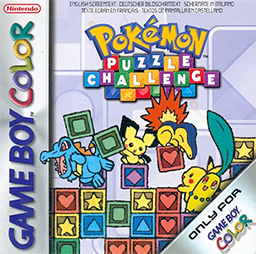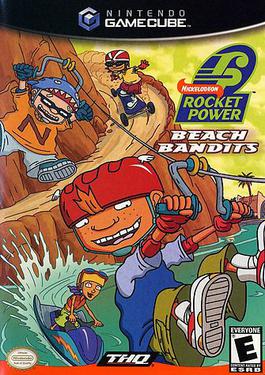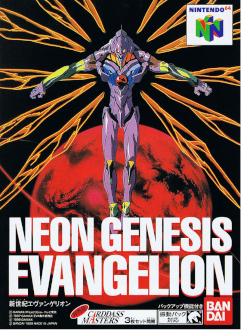
Carmageddon II: Carpocalypse Now is a vehicular combat video game, the sequel to Carmageddon, and released in 1998 for Microsoft Windows. The game was developed by Stainless Games and published by Sales Curve Interactive in Europe and Interplay Entertainment in North America. Ports for Mac OS, PlayStation and Nintendo 64 were released in 1999. A 2D version for the Game Boy Color was released in Europe in 1999, and in North America in 2000.

The Rumble Pak is a removable device from Nintendo which provides force feedback while playing video games. Games that support the Rumble Pak cause it to vibrate in select situations, such as when firing a weapon or receiving damage, to immerse the player in the game. Versions of the Rumble Pak are available for the Nintendo 64, the Nintendo DS, and the Nintendo DS Lite. A select few Game Boy Color and Game Boy Advance (GBA) games use a similar technology built into the game cartridge. Force feedback vibration has become a built-in standard feature in almost every home video game console controller since.

Pokémon Puzzle League is a puzzle video game in the Puzzle League series developed by Nintendo Software Technology and published by Nintendo for the Nintendo 64. Released in North America on September 25, 2000, and in Europe on March 2, 2001, its Puzzle League-based gameplay has a focus on puzzle-based strategy in the game's grid-based format. To advance to new levels, players are required to combat the game's trainers and gym leaders, similar to the ones featured in Pokémon Red, Blue, and Yellow. One of several games based on the Pokémon anime, it features lead protagonist Ash Ketchum, his Pikachu, his companions Brock and Misty, the Kanto Gym Leaders, and other characters from the series.

Pokémon Puzzle Challenge is a puzzle video game for the Game Boy Color, released in 2000 in Japan and North America, and in 2001 in PAL regions. It is the second Pokémon-themed entry in the Puzzle League series; however, while its Nintendo 64 counterpart Pokémon Puzzle League is visually based on the Pokemon anime, Puzzle Challenge instead draws inspiration from the Pokémon Gold and Silver games. The game features multiple modes of play and support for competitive play between two players. Puzzle Challenge was later digitally re-released via the Nintendo 3DS's Virtual Console line on November 6, 2014.

Rocket Power: Beach Bandits is an adventure game based on the television series Rocket Power. It was published in 2002 for the PlayStation 2, GameCube, and Game Boy Advance by THQ.

Tak and the Power of Juju is an action-adventure platform video game developed by Avalanche Software and published by THQ for the GameCube, PlayStation 2 and Game Boy Advance. The game was released in North America on October 15, 2003 and in Europe on March 12, 2004.

Tetrisphere is a puzzle video game developed by H2O Entertainment and published by Nintendo for the Nintendo 64. It was released in North America on August 11, 1997, and in PAL regions in February 1998. The game, originally named Phear, was slated for release on the Atari Jaguar in early 1995, but was reworked into a Tetris game for the N64 after Nintendo obtained its publishing rights.

Sucker Punch Productions, LLC is an American video game developer based in Bellevue, Washington. It is best known for creating character action games for PlayStation consoles such as Sly Cooper, Infamous, and Ghost of Tsushima. The studio has been a part of PlayStation Studios since 2011. As of 2020, the company employs about 160 people.

Mystical Ninja Starring Goemon is a platform action-adventure video game released by Konami for the Nintendo 64 on August 7, 1997 in Japan, April 16, 1998 in North America, and 18 April 1998 in Europe as the fifth entry in the Ganbare Goemon series. The second Goemon game released in North America and Europe, it follows The Legend of the Mystical Ninja and features hybrid elements of platform games and action-adventure games.

Goemon's Great Adventure, known as Mystical Ninja 2 Starring Goemon in Europe, is a video game developed and released by Konami for the Nintendo 64 on December 23, 1998. It is the third game in the Goemon series released in North America and Europe, following Mystical Ninja Starring Goemon, released two years earlier. Featuring platform gameplay in 2.5D, it returns the series to a side-scrolling format.

Space Station Silicon Valley is a platform video game developed by DMA Design and published by Take-Two Interactive. It was originally released for the Nintendo 64 in October 1998. An adaption of the game for Game Boy Color was developed by Tarantula Studios and released in 1999. A PlayStation port, developed by Runecraft, was released in 2000, under the name Evo's Space Adventures. Players control Evo, a robot reduced to a crawling microchip after a ship crash, and are tasked with taking control of animals to solve puzzles and defeat enemies.

Neon Genesis Evangelion, also referred to as Neon Genesis Evangelion 64, is a 1999 fighting video game released for the Nintendo 64 in Japan by Bandai. It is based on the Gainax anime series of the same name and the 1997 film that serves as its conclusion, The End of Evangelion. Players control a mech named Evangelion Unit 01 to destroy a race of aliens known as the Angels before they eradicate the rest of the human race. The game is known for its alterations to the source material in order to make its dystopian and unsettling atmosphere suitable for an action game, and features unique endings and plotlines not present in other Evangelion media.

Mission: Impossible is an action-adventure video game developed by Infogrames and loosely based on the 1996 film of the same name. It was originally released for the Nintendo 64 video game console in 1998. In the game, the player assumes the role of Ethan Hunt, an Impossible Missions Force (IMF) agent who must clear his name after a mole has infiltrated the IMF team. The game features 20 levels where the player must complete several mission objectives with the use of numerous high-tech gadgets.

Lego Racers is a Lego-themed racing video game developed by High Voltage Software and published by Lego Media in 1999.

Bomberman Land, known in Japan as Bomberman Land Wii, is an action puzzle video game developed and published by Hudson Soft. It was released in Japan for Wii on March 8, 2007, January 29, 2008 in North America, and March 14, 2008 in the PAL region. Part of the Bomberman franchise, it is the fifth game in the Bomberman Land series and the console counterpart to the portable version released for the PlayStation Portable later in the same month.

Hot Wheels Turbo Racing is a racing video game released for the Nintendo 64 and PlayStation in 1999. It features 40 cars based on the Hot Wheels series of toys. It also features Kyle Petty's 1999 NASCAR stock car, as it was sponsored by Hot Wheels. The game features music from artists like Primus, Metallica, The Reverend Horton Heat and Mix Master Mike.

40 Winks is a platform video game developed by Eurocom Entertainment Software and published by GT Interactive for the PlayStation. A version was developed for the Nintendo 64, and reviewed in both Nintendo Official Magazine UK and Nintendo Power, but was cancelled soon before release.

Wade Hixton's Counter Punch is a boxing video game for Game Boy Advance. Its gameplay has been favorably compared to Punch-Out!!.

The World Is Not Enough is a first-person shooter video game developed by Black Ops Entertainment and based on the 1999 James Bond film of the same name. It was published by Electronic Arts and released for the PlayStation on November 7, 2000, shortly after the release of its Nintendo 64 counterpart. The World Is Not Enough is the successor to Black Ops Entertainment's 1999 title Tomorrow Never Dies and uses an improved version of its engine. The game received mixed reviews from critics, who criticised its short length and lack of multiplayer mode.

















